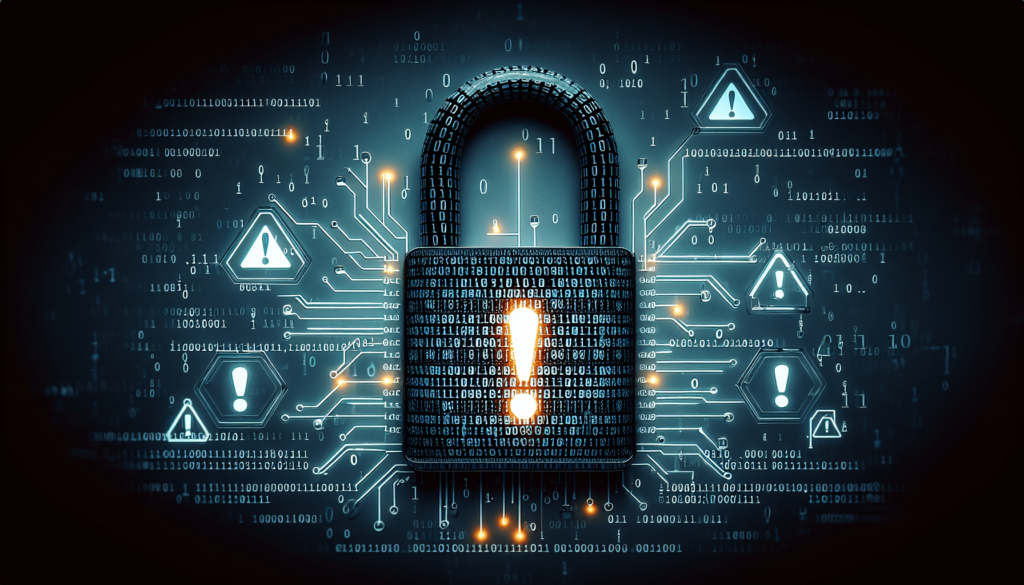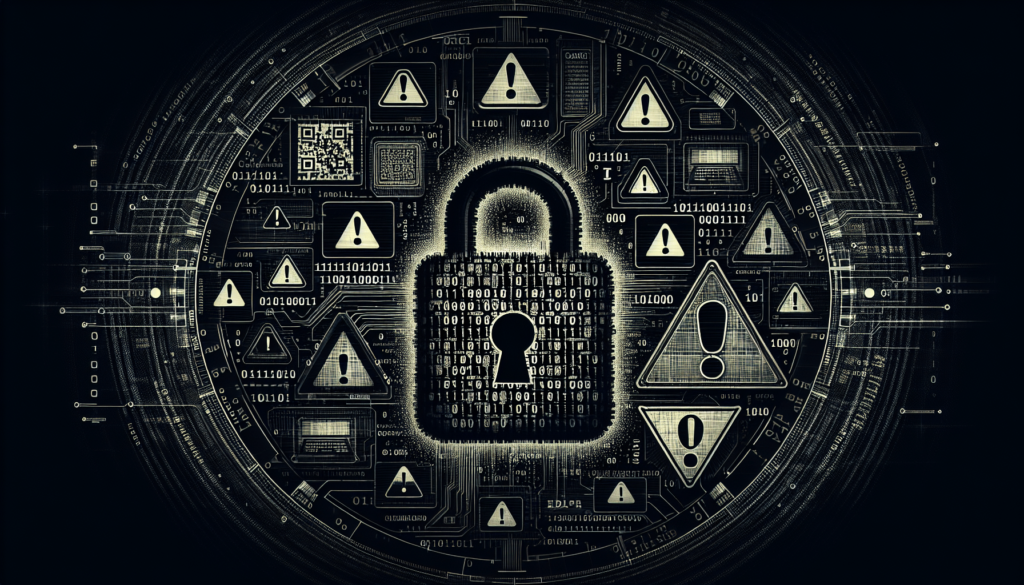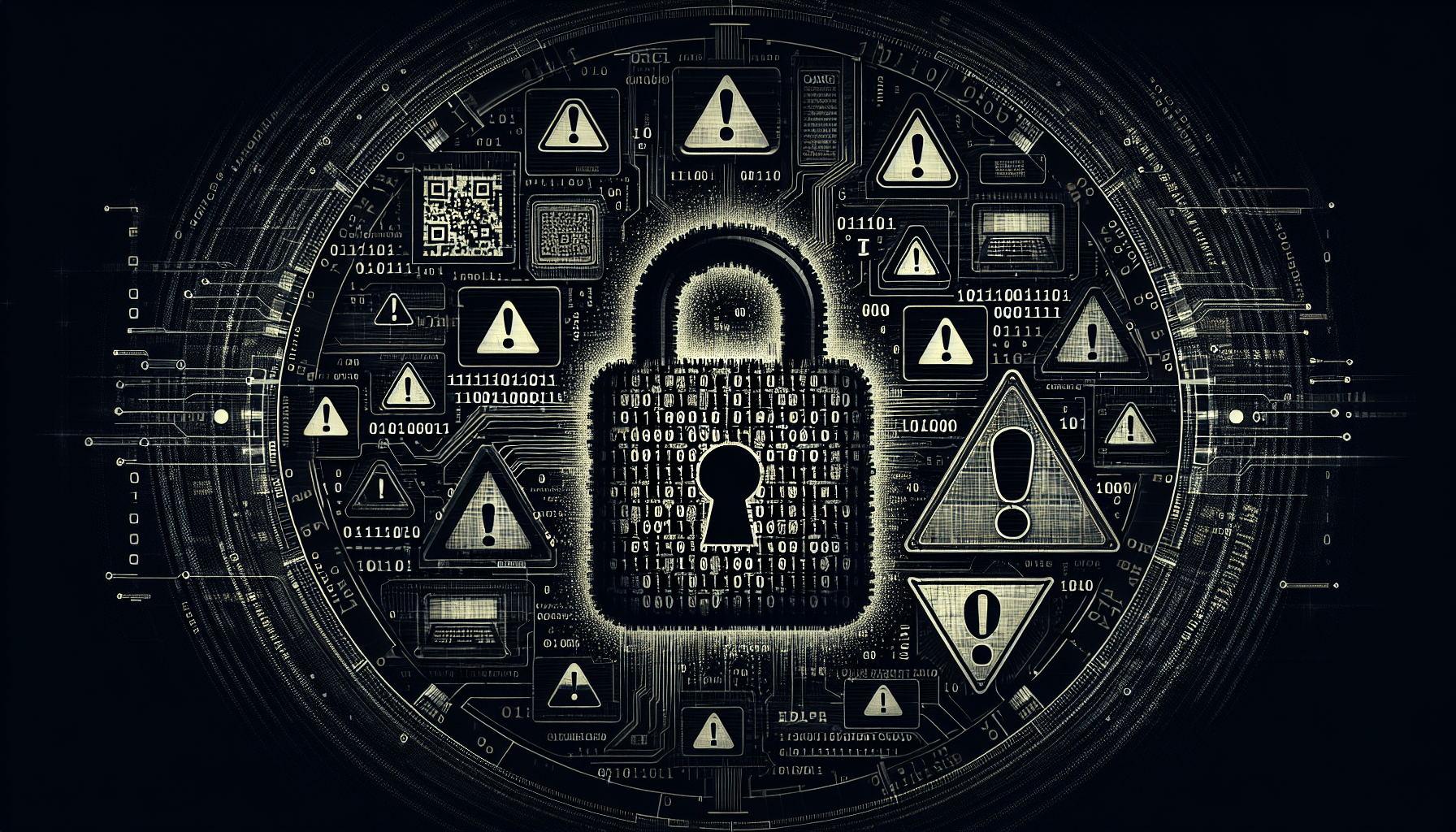Have you ever imagined what life would be like if your entire digital world was held hostage? A moment when all your important data gets encrypted, and you can’t access it unless you pay a ransom? It’s hard to believe this can happen to anyone connected to the internet, but recent events have shown just how real this danger is.
US Authorities Issue RansomHub Ransomware Alert
In a move to safeguard digital infrastructures, US Authorities have issued a ransomware alert against a notorious group known as RansomHub. This group has made headlines for their brazen attacks and sophisticated techniques, putting at risk various organizations across multiple sectors. But what makes RansomHub so unique, and how can you protect yourself? Let’s break this down in significant detail.
The Prolific Threat of RansomHub
RansomHub isn’t your run-of-the-mill cybercriminal outfit. These bad guys are believed to have “encrypted and exfiltrated” data from at least 210 victims. That’s a staggering number when you think about it, encompassing organizations in both public and private sectors. From healthcare to IT, government services to emergency response units, and even vital sectors like food, agriculture, and water management—RansomHub’s reach is extensive.
And it doesn’t stop there. They’ve also had their sights set on the so-called “critical” infrastructure, which includes manufacturing, transport, and communications. Imagine the chaos that can ensue if these sectors are compromised. It’s no wonder the alert issued by US authorities is creating waves.
RansomHub’s Double Extortion Tactics
So, what exactly are RansomHub’s tactics, techniques, and procedures (TTPs)? According to the Cybersecurity and Infrastructure Security Agency (CISA), this group employs a double-extortion method. They don’t just encrypt your files; they also exfiltrate data to extort their victims further. This means that even if you have backups and can restore your systems, they still possess your sensitive information and can release it to the public or sell it to the highest bidder.
Adding another layer of complexity, RansomHub operates on an affiliate model. This essentially means that different affiliates may employ slightly different methods of data exfiltration. They typically compromise internet-facing systems and user endpoints by employing phishing schemes, password spraying—where they target accounts previously compromised in password breaches—and exploiting known vulnerabilities.

The Phases of an Attack
Once inside a network, RansomHub affiliates will lock down data and leave behind a ransomware note. Here’s a twist: this note often doesn’t include a ransom demand or payment details. Instead, victims get a client ID and instructions to make contact through a .onion URL via the Tor browser. Talk about cloak-and-dagger operations!
After making contact, the clock starts ticking. Victims generally have between 3 to 90 days to pay up, or their data will be splashed all over the RansomHub Tor data leak site. The group uses advanced elliptic curve encryption, specifically the Curve 25519 algorithm and employs intermittent encryption, focusing on data files while sparing executable files. It’s a diabolical level of precision that only adds to the complexity and danger of their attacks.
Indicators of Compromise (IOCs)
Thankfully, the joint cybersecurity advisory from CISA gives you something to work with—specifically, a list of IP addresses and email addresses linked to the group, often associated with QakBot infections. By keeping an eye on these indicators, you can spot potential signs of compromise early.
Here’s a simplified table of what to look out for:
| IOCs | Description |
|---|---|
| IP Addresses | Many linked to QakBot infections |
| Email Addresses | Used in phishing campaigns |
Being aware of these IOCs can help you catch a RansomHub intrusion before it escalates. It’s not a silver bullet, but it’s a start.

The Immediate Response
If you’re unfortunate enough to find yourself caught in RansomHub’s web, the authorities have specific steps you should take immediately. First, take any potentially affected hosts offline to prevent further spread. Reimage these systems to a known good state and issue new account credentials. Monitoring your systems for any suspicious behavior after a breach is crucial.
Maintaining multiple, segmented backups can also be a lifesaver. It’s good digital hygiene and can make the difference between quick recovery and catastrophic loss. Another key recommendation is to follow NIST guidance for password policies. This might seem trivial, but strong, unique passwords can slow down or even stymie attackers.
CISO’s Role and Responsibility
If you’re a Chief Information Security Officer (CISO), you’re the sentinel guarding your organization against such threats. Validating your security controls through regular testing and exercises can give you an edge. It’s like fire drills; you hope you never have to use the practice, but you’ll be grateful you did if a crisis hits.

The Broader Context
The #StopRansomware joint Cybersecurity Advisory isn’t a solo act. It’s a concerted effort from multiple agencies, including the FBI, CISA, the Multi-State Information Sharing and Analysis Center (MS-ISAC), and the Department of Health and Human Services (HHS). This coordinated approach provides a holistic defense strategy, leveraging the strengths of each agency.
Importance of Collaboration
Protection against ransomware isn’t just a solitary endeavor. The more organizations share information and collaborate, the better the overall security landscape becomes. If you think about it, cybercriminals share information among themselves to develop more effective attacks; it only makes sense that defenders should do the same.

Case Studies and Lessons Learned
How many victims of ransomware attacks could have fared better had they known about the specific TTPs employed by these criminals? In studying past incidents, it’s often found that early detection and swift isolation prevented more extensive damage. Having segmented backups, for instance, can act as a firewall of sorts, stopping the spread and allowing more rapid recovery.
RansomHub and its Broader Implications
Why is RansomHub a cause for concern beyond the immediate victims? Consider the interconnected nature of today’s digital economy. A ransomware attack on a significant supplier or IT service provider can have cascading effects, disrupting supply chains and operations far beyond the initial target. The ripple effect can be genuinely mind-boggling.
Mitigation Strategies
So, what comprehensive steps can you take to guard against this insidious threat? Here’s a checklist to get you started:
- Regularly Update and Patch Systems: Ensure all systems are up-to-date with the latest patches, especially for known vulnerabilities.
- Conduct Cybersecurity Training: Regular training sessions on phishing and social engineering can arm your employees against being the unwitting entry points for attackers.
- Implement Multi-Factor Authentication (MFA): Adding layers to your authentication process makes it harder for attackers to gain access, even if they have compromised one set of credentials.
- Network Segmentation: Divide your network into segments to limit the spread of ransomware if an infiltration does occur.
- Back-Up and Encrypt Important Data: Regular backups saved offline can ensure you have a clean copy to revert to. Additionally, encrypting sensitive data adds an extra layer of security.
- Endpoint Detection and Response (EDR) Systems: Utilize advanced EDR systems to detect suspicious activities in real-time and automatically isolate affected systems.
- Incident Response Plan: Develop and regularly update your incident response plan, so everyone knows their role in case of an attack.
- Regular Audits and Penetration Testing: Continuously test your defenses by hiring ethical hackers to find and fix vulnerabilities before the criminals do.
By following these strategies, you’ll increase your organization’s resilience against ransomware attacks.
Emerging Trends in Ransomware
RansomHub isn’t alone in using double extortion tactics. Many ransomware groups are moving towards some form of this practice, realizing that it increases the pressure on victims to pay. Furthermore, as security measures become more sophisticated, attackers are consistently evolving their methods. For instance, some groups are now targeting social media accounts to spread ransomware, casting a wider net than the traditional corporate targets.
The Human Factor
While strengthening your technological defenses is crucial, let’s not forget the human element. A well-informed team can be your best line of defense. This is why consistent training and awareness campaigns are imperative. It’s often a simple mistake—a single click on a phishing email—that leads to massive compromises.
The Psychological Warfare
Ransomware attackers also employ psychological tactics to exert pressure. Deadlines create a sense of urgency, and the threat of public data release can be emotionally and reputationally damaging. Understanding these psychological tactics can help you prepare your team to respond more calmly and effectively under pressure.
Legal and Ethical Considerations
If you do experience a ransomware attack, the decision to pay or not to pay is fraught with ethical and legal ramifications. On one hand, paying the ransom might seem like the only way to quickly regain access to your data; on the other hand, it funds criminal activities and encourages further attacks. Authorities generally advise against paying ransoms, but the final decision often comes down to the unique circumstances of each case.
Final Thoughts
Ransomware is more than just a digital threat; it’s an economic and societal menace that can affect everything from individual lives to entire national infrastructures. With groups like RansomHub becoming more sophisticated and audacious, it’s clear that the fight against ransomware is far from over.
But by staying informed, maintaining vigilance, and employing robust security measures, you can protect your digital world from these modern-day pirates. Your data, your organization’s reputation, and your peace of mind are paramount. So, bolster your defenses and remember: a proactive stance is your best bet in the face of such evolving digital threats.
Source: https://www.infosecurity-magazine.com/news/us-authorities-ransomhub/

